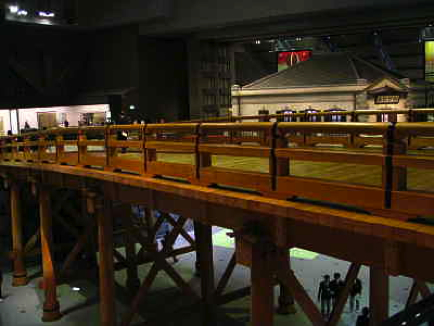 The Edo-Tokyo Museum was founded in 1993 as a place where visitors can learn more about the history and culture of Edo and Tokyo, and the daily lives of its warriors and townspeople. Edo was the de facto capital during the Edo period (1603-1867) and renamed Tokyo in 1868.
The Edo-Tokyo Museum was founded in 1993 as a place where visitors can learn more about the history and culture of Edo and Tokyo, and the daily lives of its warriors and townspeople. Edo was the de facto capital during the Edo period (1603-1867) and renamed Tokyo in 1868.
Just beyond the entrance, visitors are transformed to another era where you cross a life-size replica of the Nihonbashi Bridge (about half its original length). From here you look out over a vast space that some say resembles more of an indoor version of a theme park than a traditional halls-and-corridors museum. The extensive Edo section of the museum eventually flows into the modernized pre and post-war Tokyo era zone of the museum.
In the Edo zone, there are numerous intricately constructed and minutely finished scale models which enable you to fully imagine what Edo was like hundreds of years ago. At the end of the Edo zone a truly gorgeous life size replication of the Nakamura Kabuki Theater Hall can be found. In the Tokyo zone you will see large models of modern Tokyo. One of them is the street in the Ginza area whose design was influenced by Regent Street in London. However, the street was burned to ashes due to the Great Kanto Earthquake in 1923.
The Edo-Tokyo Museum requires at least one hour and a half to properly view. Headphone sets for English speakers are available.
Open: 9:30am to 5:00pm
Closed: Mondays , New Year holidays(Dec 25 to Jan 1) If Monday is a national holiday,the museum is closed on the following day instead.
Admission: 600Yen